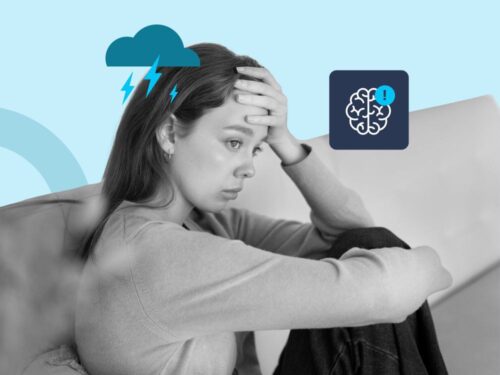Understanding Anxiety Disorders: Symptoms, Causes, and Treatments
In today’s fast-paced world, feelings of worry and nervousness are common. From looming deadlines to personal challenges, life often triggers transient bouts of anxiety. However, for millions of people worldwide, anxiety can evolve into a persistent, overwhelming condition known as an anxiety disorder. Understanding what anxiety disorders are, their symptoms, causes, and available treatments is essential to break the stigma and help those affected find relief.
What Are Anxiety Disorders?
Anxiety disorders are a group of mental health conditions characterized by excessive fear, worry, or nervousness that interfere with daily life. Unlike normal anxiety, which can be a helpful signal alerting us to danger or stress, anxiety disorders cause disproportionate and persistent feelings that are difficult to control.
There are several types of anxiety disorders, including:
– Generalized Anxiety Disorder (GAD): Chronic, exaggerated worry about everyday life events.
– Panic Disorder: Sudden, intense episodes of fear accompanied by physical symptoms like heart palpitations.
– Social Anxiety Disorder: Fear of social situations and being judged or humiliated.
– Specific Phobias: Irrational fears of particular objects or situations, such as spiders or flying.
– Separation Anxiety Disorder: Excessive fear about separation from loved ones, often seen in children but also affecting adults.
Recognizing the Symptoms
Symptoms of anxiety disorders vary depending on the type, but common signs include:
– Persistent worry or fear that is difficult to control
– Restlessness or feeling on edge
– Rapid heartbeat or palpitations
– Sweating, trembling, or chills
– Shortness of breath or a feeling of choking
– Nausea or gastrointestinal distress
– Dizziness or lightheadedness
– Difficulty concentrating or feeling mentally “foggy”
– Sleep disturbances, such as trouble falling or staying asleep
In some cases, individuals may experience panic attacks—sudden episodes of intense fear accompanied by physical symptoms like chest pain, sweating, and a sense of impending doom. Recognizing these symptoms early can lead to timely intervention and management.
The exact cause of anxiety disorders is complex and multifaceted. Several factors may contribute:
– Genetics: A family history of anxiety or other mental health conditions increases vulnerability.
– Brain Chemistry: Imbalances in neurotransmitters like serotonin and norepinephrine can influence anxiety levels.
– Environmental Stressors: Traumatic events, abuse, or significant life changes can trigger anxiety.
– Personality Traits: Individuals with certain traits, such as perfectionism or a tendency to worry, are more prone.
– Health Conditions: Chronic illnesses or substance abuse can also heighten anxiety risks.
It’s important to understand that anxiety disorders are not a sign of weakness or character flaw. They are recognized medical conditions requiring compassion and appropriate treatment.
Treatment Options
Fortunately, anxiety disorders are highly treatable. A combination of therapies, lifestyle changes, and sometimes medication can significantly reduce symptoms and improve quality of life.
Psychotherapy:
– Cognitive Behavioral Therapy (CBT): The gold-standard treatment, CBT helps individuals identify and challenge negative thought patterns that fuel anxiety. Through structured sessions, patients learn coping strategies and develop healthier responses to anxiety-provoking situations.
– Exposure Therapy: Particularly effective for phobias and OCD, this involves gradual exposure to feared objects or situations to diminish the fear response over time.
Medication:
– Selective Serotonin Reuptake Inhibitors (SSRIs): Common antidepressants that help balance brain chemicals related to mood and anxiety.
– Buspirone: An anti-anxiety medication specifically approved for GAD.
– Beta-Blockers: Used to manage physical symptoms like rapid heartbeat during panic attacks.
Lifestyle and Self-Care:
– Regular Exercise: Physical activity releases endorphins, natural mood lifters.
– Mindfulness and Meditation: Practices that promote relaxation and present-moment awareness.
– Adequate Sleep: Restful sleep helps regulate emotions and reduce anxiety.
– Healthy Diet: Nutritious foods support brain health.
Support Systems:
Talking openly with friends, family, or support groups can reduce feelings of isolation. Education about anxiety disorders empowers individuals to seek help without shame.
Breaking the Stigma
Despite increased awareness, stigma around mental health persists. Many people hesitate to seek help due to fear of judgment. Recognizing anxiety disorders as legitimate medical conditions is crucial for fostering understanding and support. Encouraging open conversations, promoting mental health education, and ensuring access to professional care are vital steps forward.
Final Thoughts
Anxiety disorders can be debilitating, but they are also manageable. With awareness of symptoms, understanding of causes, and access to effective treatments, individuals can reclaim control over their lives. If you or someone you know is struggling with persistent worry or panic, reaching out to a mental health professional can be the first step toward healing.
Remember, seeking help is a sign of strength, and recovery is possible. You don’t have to face anxiety alone—support is available, and hope is within reach.
Addresses
– 146 SPACES, 17 City North Place, Finsbury Park, London N4 3FU
– Nightingale Consulting Rooms, 11-19 Lisson Grove, Marylebone, London NWI 6SH
Contact Numbers
Whatsapp
– +44 7452 355225
– +44 7418 465495
Phones
– +44 (0)20 7535 7700
– +44 (0)80 0970 8017

